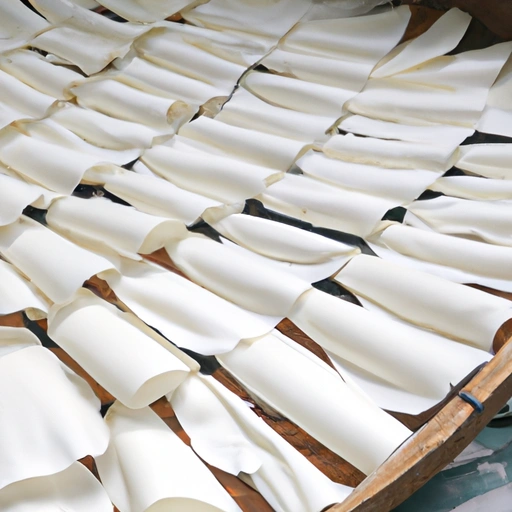Rice Paper
Description

Rice paper is a thin, edible paper made from rice flour and water, often with the addition of tapioca or other starches to improve its texture and strength. This ingredient is particularly popular in Southeast Asian cuisine but has found its way into kitchens around the globe. Rice paper is known for its translucent appearance and elasticity, which allows it to be used in a variety of dishes. It is sold in dried sheets and typically requires soaking in water to become pliable before use.
Common uses
Commonly used in fresh spring rolls, wraps, and dumplings, rice paper provides a delicate, yet durable casing for a variety of fillings. Its neutral taste makes it an excellent carrier for herbs, vegetables, meats, and seafood. Additionally, rice paper can be fried to create a crispy texture, popular in dishes like Vietnamese fried spring rolls, or used as an edible decoration on desserts and other creative presentations.
Nutritional value
Calories
One rice paper sheet (approximately 22 cm/8.5 inches in diameter) contains around 30-45 calories (125-188 kJ).
Protein
Each sheet contains about 0.3-1 gram of protein, varying by brand and size.
Fat
Rice paper is naturally low in fat, with each sheet typically containing less than 0.2 grams.
Carbohydrates
The carbohydrate content of a single sheet of rice paper ranges from 7-9 grams, primarily from rice starch.
Vitamins
While not particularly high in vitamins, some fortified rice papers may contain added nutrients.
Minerals
Rice paper may contain trace amounts of minerals such as sodium, although the levels are generally low.
Health benefits
Rice paper is a gluten-free alternative to wheat-based wrappers, making it suitable for those with celiac disease or gluten sensitivity. Its low fat content also makes it a lighter option compared to other types of dough-based wrappers. However, since it's made primarily from starch, it's best consumed in moderation, especially for those managing their carbohydrate intake.
Potential risks
As with any food product, there is a risk of an allergic reaction, although this is rare with rice paper. Overconsumption may lead to an excessive intake of simple carbohydrates. It's also important to handle rice paper with care as it is delicate when wet and can tear easily.
Common recipes
Rice paper is famously used in Vietnamese spring rolls, also known as 'Gỏi cuốn', and can be filled with an assortment of ingredients such as shrimp, herbs, pork, rice vermicelli, and vegetables. It is also a staple in Thai and other Southeast Asian cuisines.
Cooking methods
Rice paper can be used fresh, steamed, or fried. When steamed, it becomes slightly sticky, perfect for making dumplings or rolls. When fried, it crisps up, providing a crunchy texture to dishes.
Pairing with other ingredients
Rice paper pairs well with a variety of dipping sauces, from hoisin to peanut sauce. It also complements fresh herbs like mint, cilantro, and basil, as well as a multitude of vegetables like carrots, cucumbers, and lettuce.
Summary
Rice paper is a versatile ingredient that can be incorporated into an array of dishes, from traditional Asian cuisine to modern, health-conscious meals. Its unique texture, low calorie count, and ease of use make it a popular choice for creative cooks around the world. Whether you're wrapping fresh ingredients for a summer roll or crafting a crispy fried appetizer, rice paper is an invaluable addition to any kitchen pantry.